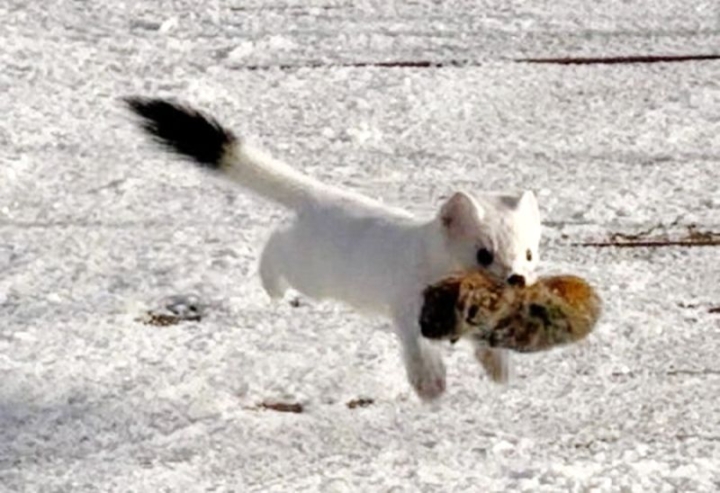
In the rugged and pristine wilderness of Russia’s Kamchatka Peninsula, a remarkable tale of human-wildlife interaction is unfolding within the Kronotsky Nature Reserve. Near the remote ‘Ipuin’ ranger station, a diminutive yet formidable resident has captured attention: the stoat, or ermine, a creature known for its agility and predatory prowess. This fascinating account, originally reported by Kamchatka.Today, offers a unique glimpse into the daily lives of wildlife rangers and the intricate balance of nature in one of the world’s most biodiverse regions.
State inspector Polina Pimenova shared the captivating details of her encounter with this charming, powerful, and swift predator. Her initial sighting through a window revealed the stoat briefly acknowledging her presence before disappearing. To her surprise, merely moments later, the fearless creature reappeared, darting directly towards her along a path, clutching a frozen vole firmly in its jaws. This vivid display, Pimenova surmised, indicated the stoat was likely retrieving a meal from its hidden winter larder, a common survival strategy for these industrious animals.
Pimenova fondly describes the stoat as a ‘local resident’ who ‘saves our provisions from rodents and brings joy.’ Indeed, the presence of such a proficient hunter is invaluable in keeping the remote ranger station free from mice and voles that might otherwise spoil critical supplies. However, the symbiotic relationship comes with a playful caveat: while stoats are excellent pest controllers, their opportunistic nature means that any ‘badly stored’ provisions could easily become their next target. Consequently, rangers meticulously secure their food supplies in sturdy containers, often elevated, to prevent any unintended sharing with their furry neighbors.
This small but exceptionally brave carnivore is known for its remarkable fearlessness, occasionally even ‘testing the durability’ of an inspector’s boots with a playful, yet determined, lunge. Such encounters underscore the unique coexistence between humans and wildlife in these crucial protected areas. The Kronotsky Nature Reserve, a UNESCO World Heritage site, is renowned for its active volcanoes, geysers, and unparalleled biodiversity, making the work of its inspectors vital not just for Russia, but for global conservation efforts. These daily interactions with creatures like the stoat, beautifully captured in photographs by Polina Pimenova herself, serve as a powerful reminder of the delicate balance that park rangers tirelessly strive to maintain, ensuring the preservation of these wild spaces for future generations.